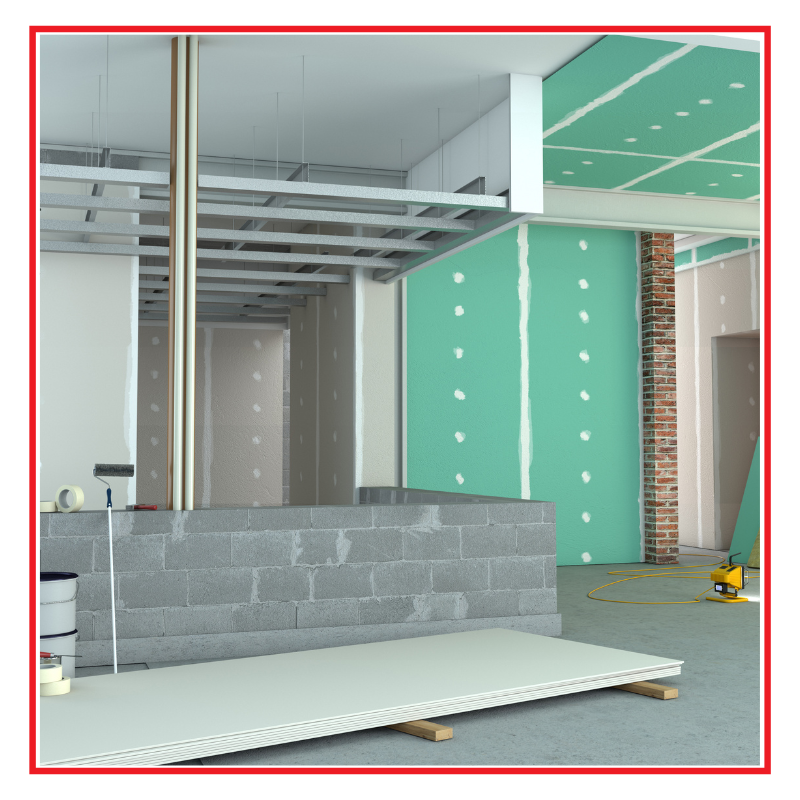The Challenges Of Converting Vacant Commercial Properties Into Residential Units In The Netherlands

Table of Contents
The Netherlands is grappling with a significant housing crisis, driving the exploration of innovative solutions to increase housing supply. One promising avenue is the conversion of vacant commercial properties into residential units. While offering a potential solution to the housing shortage, this process presents numerous complex challenges. This article will delve into the key obstacles faced in converting vacant commercial properties into residential units in the Netherlands, providing insights for developers, investors, and policymakers.
Regulatory Hurdles and Permitting Processes
Navigating the regulatory landscape is a significant hurdle in commercial-to-residential conversions in the Netherlands. Understanding and complying with the complex web of regulations is crucial for project success.
Navigating Dutch Building Regulations (Bouwbesluit)
The Dutch Building Code (Bouwbesluit) dictates stringent requirements for building construction and renovations. Meeting these standards for residential conversions often proves demanding.
- Compliance Requirements: Conversions must adhere to strict regulations concerning fire safety, accessibility for people with disabilities, energy efficiency, and structural integrity.
- Specific Regulations for Residential Conversions: Specific requirements exist for aspects such as sound insulation between units, minimum room sizes, and the provision of adequate natural light and ventilation.
- Obtaining Necessary Permits: Securing the necessary building permits requires a thorough application process, involving detailed plans and documentation, often leading to lengthy delays.
- Lengthy Approval Times: The approval process for building permits can be protracted, adding significant time and cost to the project timeline.
Successfully navigating the Bouwbesluit requires expert guidance and meticulous planning. Understanding the nuances of these Netherlands building codes is paramount.
Zoning Regulations and Land Use Planning
Zoning regulations (bestemmingsplan) significantly influence the feasibility of converting commercial properties into residential units. These regulations dictate the permitted uses of land within specific areas.
- Designated Areas for Residential Use: Only properties located in zones designated for residential use are generally eligible for conversion.
- Obtaining Zoning Variances: If a property is located in a non-residential zone, obtaining a zoning variance might be necessary, which can be a lengthy and complex process.
- Appeals Processes: If a zoning variance application is rejected, there are appeals processes, but these can also be time-consuming and uncertain.
- Potential Conflicts with Local Plans: Conversion projects may encounter conflicts with broader local development plans, further complicating the approval process.
Careful assessment of zoning regulations and land use planning is essential to determine the viability of any commercial-to-residential conversion project in the Netherlands.
Financial Considerations and Cost Analysis
The financial aspects of converting commercial spaces into residential units are substantial and often present significant challenges.
High Conversion Costs
Transforming commercial spaces into habitable residences often involves extensive renovations and upgrades, resulting in high conversion costs.
- Structural Renovations: Commercial buildings frequently require significant structural modifications to meet residential building codes.
- Installation of Plumbing and Electrical Systems: Installing new or upgrading existing plumbing and electrical systems is typically a major expense.
- Fire Safety Upgrades: Meeting fire safety regulations requires substantial investment, including the installation of fire detection and suppression systems.
- Insulation Improvements: Improving insulation to meet energy efficiency standards often adds considerable cost.
- Potential Asbestos Removal: The presence of asbestos in older commercial buildings requires costly and specialized removal procedures.
A thorough cost analysis is crucial to determine the financial feasibility of any conversion project.
Securing Funding and Financing Options
Securing adequate funding is often a major barrier to successful commercial-to-residential conversions.
- Attracting Investors: The high initial investment and potential risks involved can make attracting investors challenging.
- Securing Mortgages: Traditional mortgage lenders may be hesitant to finance these projects due to the complexities and inherent risks.
- Government Grants and Subsidies: Exploring government grants and subsidies specifically designed for residential conversions can significantly improve the financial viability of a project.
- Potential Risks for Lenders: The uncertainties associated with the conversion process, including regulatory approvals and construction costs, may deter lenders.
Architectural and Design Constraints
Converting commercial spaces into residential units presents unique architectural and design challenges.
Adapting Commercial Spaces for Residential Living
Commercial spaces are rarely designed with residential living in mind, necessitating creative solutions to create comfortable and functional homes.
- Creating Sufficient Natural Light: Many commercial buildings lack adequate natural light, requiring strategic design solutions to maximize light penetration.
- Optimizing Space for Comfortable Living: Efficient space planning is critical to create comfortable living spaces within often irregularly shaped commercial units.
- Ensuring Adequate Ventilation: Proper ventilation is crucial for healthy living, necessitating careful consideration during the conversion process.
- Incorporating Energy-Efficient Solutions: Designing for energy efficiency not only reduces running costs but also contributes to a sustainable outcome.
Careful architectural planning and design are essential to successfully transform commercial spaces into desirable residential units.
Preservation of Historical Buildings
Converting heritage buildings presents additional complexities, demanding a balance between modern living standards and historical preservation.
- Compliance with Monument Regulations: Strict regulations govern alterations to listed buildings (monumenten), necessitating careful planning and adherence to preservation guidelines.
- Preservation of Original Features: Maintaining original architectural features while adapting the building for modern living requires specialized expertise and often increases costs.
- Balancing Historical Integrity with Modern Living Standards: Striking a balance between preserving historical integrity and creating comfortable modern living spaces is a key design challenge.
Social and Environmental Impact
Commercial-to-residential conversions offer significant social and environmental benefits.
Addressing the Housing Shortage
Converting vacant commercial properties directly contributes to alleviating the Netherlands' housing shortage.
- Increased Housing Supply: Conversions provide additional housing units, increasing the overall supply and potentially reducing housing prices.
- Affordable Housing Options: Depending on the project, conversions can create more affordable housing options, benefiting lower-income families.
- Revitalizing Urban Areas: By transforming vacant commercial spaces, conversions help revitalize urban areas, improving the overall quality of life.
- Reducing Urban Sprawl: Converting existing buildings helps reduce urban sprawl by making efficient use of existing infrastructure.
Environmental Considerations
Sustainable practices during conversions can significantly reduce their environmental impact.
- Energy Efficiency Upgrades: Incorporating energy-efficient materials and technologies minimizes the building's carbon footprint.
- Sustainable Materials: Using sustainable and recycled materials reduces the environmental impact of the renovation process.
- Reducing Carbon Footprint: Minimizing energy consumption during construction and operation contributes to reducing the overall carbon footprint.
- Minimizing Waste During Renovations: Proper waste management during renovation minimizes the environmental impact of construction debris.
Conclusion
Converting vacant commercial properties into residential units in the Netherlands presents significant challenges, ranging from complex regulations and substantial financial burdens to unique architectural constraints. However, these projects offer a vital solution to the ongoing housing crisis, contributing to increased housing supply, urban revitalization, and sustainable development. By understanding and effectively navigating these challenges, developers, investors, and policymakers can unlock the potential of converting vacant commercial properties into much-needed residential spaces. Learn more about the opportunities and challenges of commercial-to-residential conversions in the Netherlands today!

Featured Posts
-
 Find The Best Memorial Day Deals A Shoppers Guide
May 28, 2025
Find The Best Memorial Day Deals A Shoppers Guide
May 28, 2025 -
 Is Nintendos New Strategy Too Safe Analyzing The Recent Releases
May 28, 2025
Is Nintendos New Strategy Too Safe Analyzing The Recent Releases
May 28, 2025 -
 Jawa Tengah 24 April 2024 Prakiraan Cuaca Dan Peringatan Hujan
May 28, 2025
Jawa Tengah 24 April 2024 Prakiraan Cuaca Dan Peringatan Hujan
May 28, 2025 -
 2025 Amas Your Guide To The Years Biggest Awards Show
May 28, 2025
2025 Amas Your Guide To The Years Biggest Awards Show
May 28, 2025 -
 Update On Rayan Cherki From A German Source
May 28, 2025
Update On Rayan Cherki From A German Source
May 28, 2025
